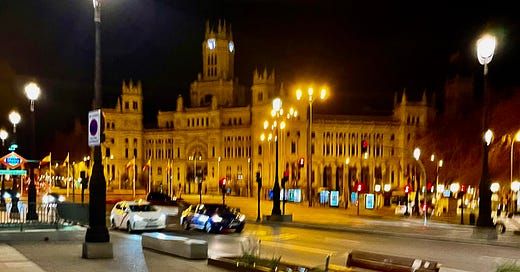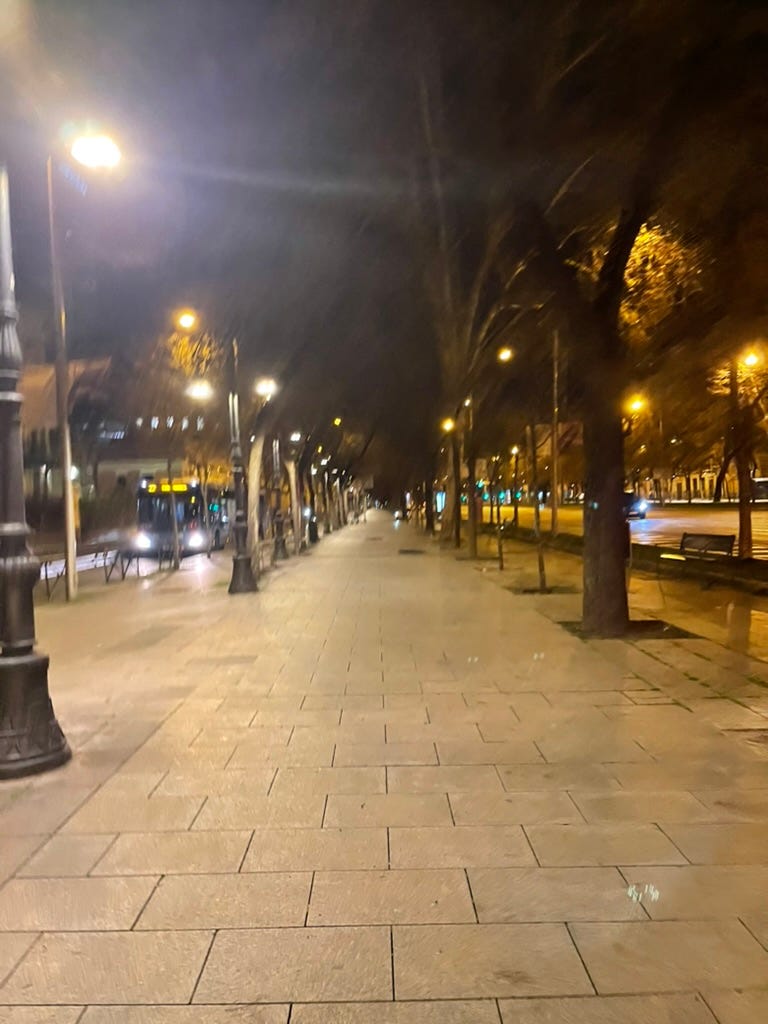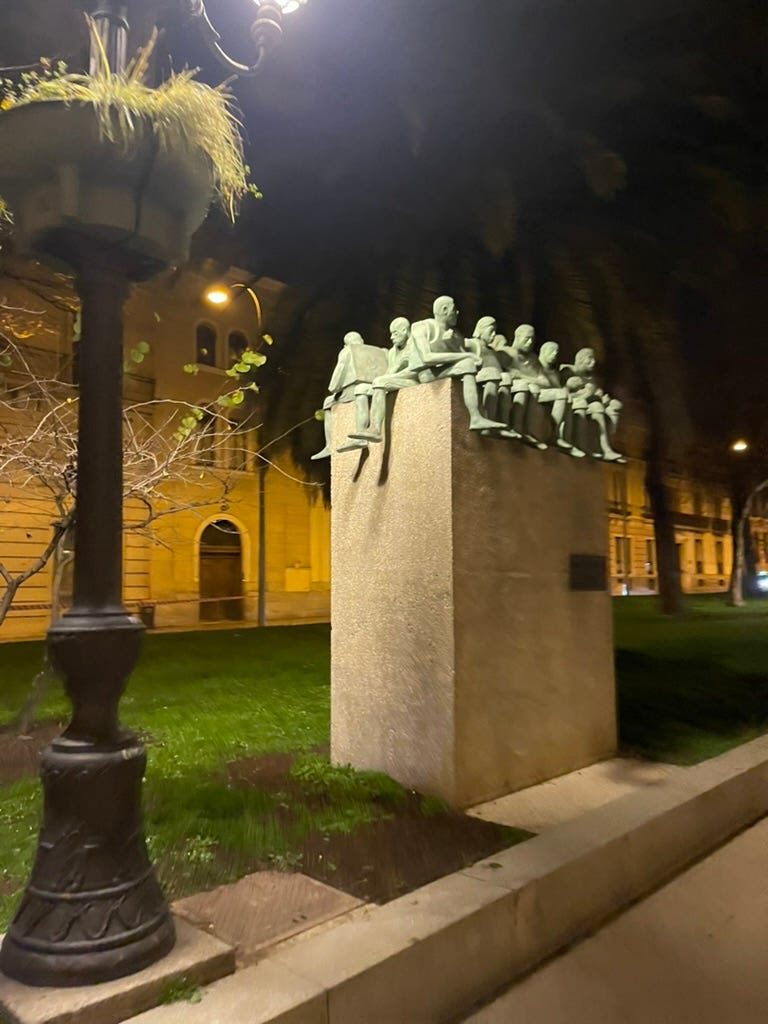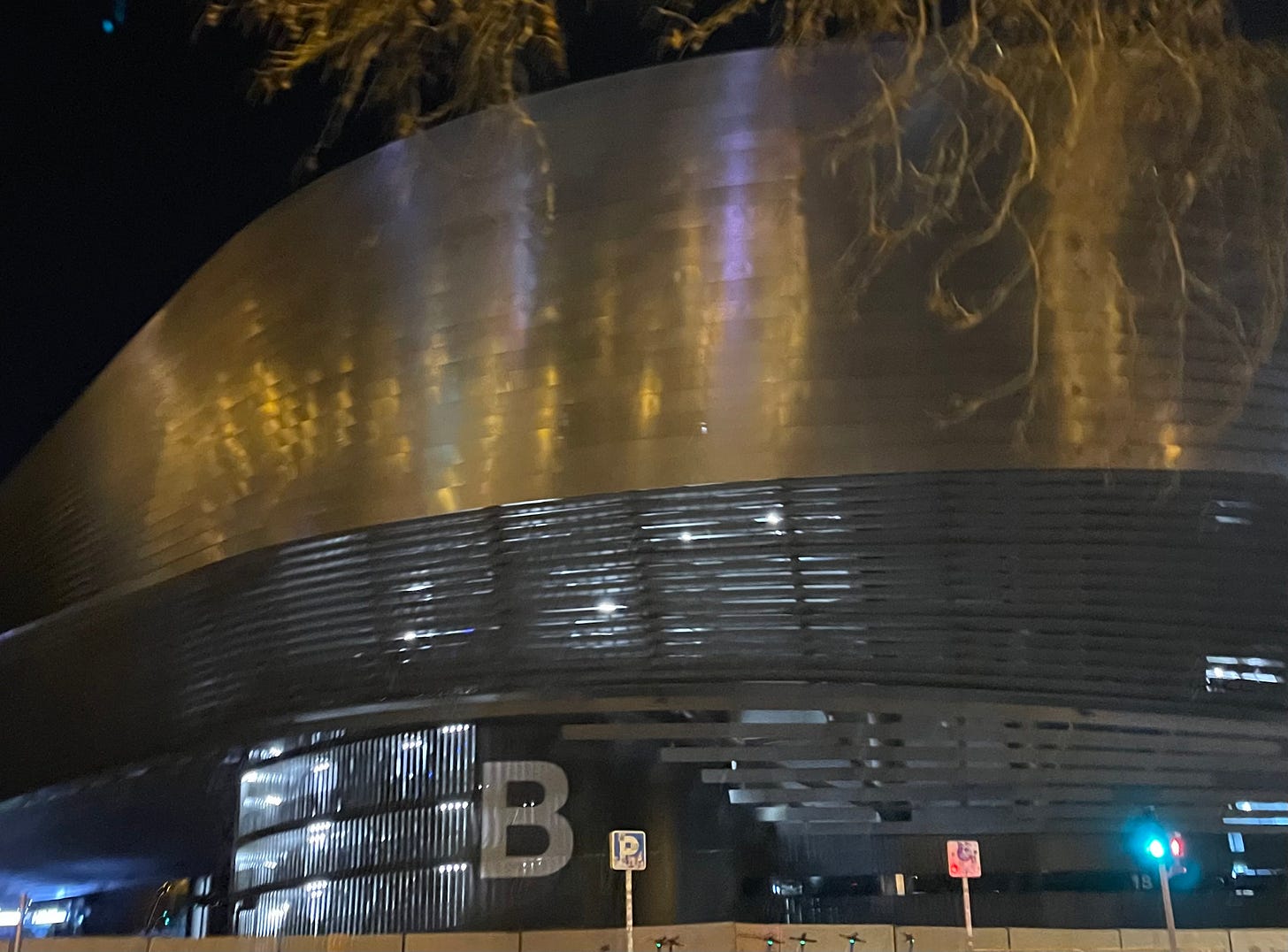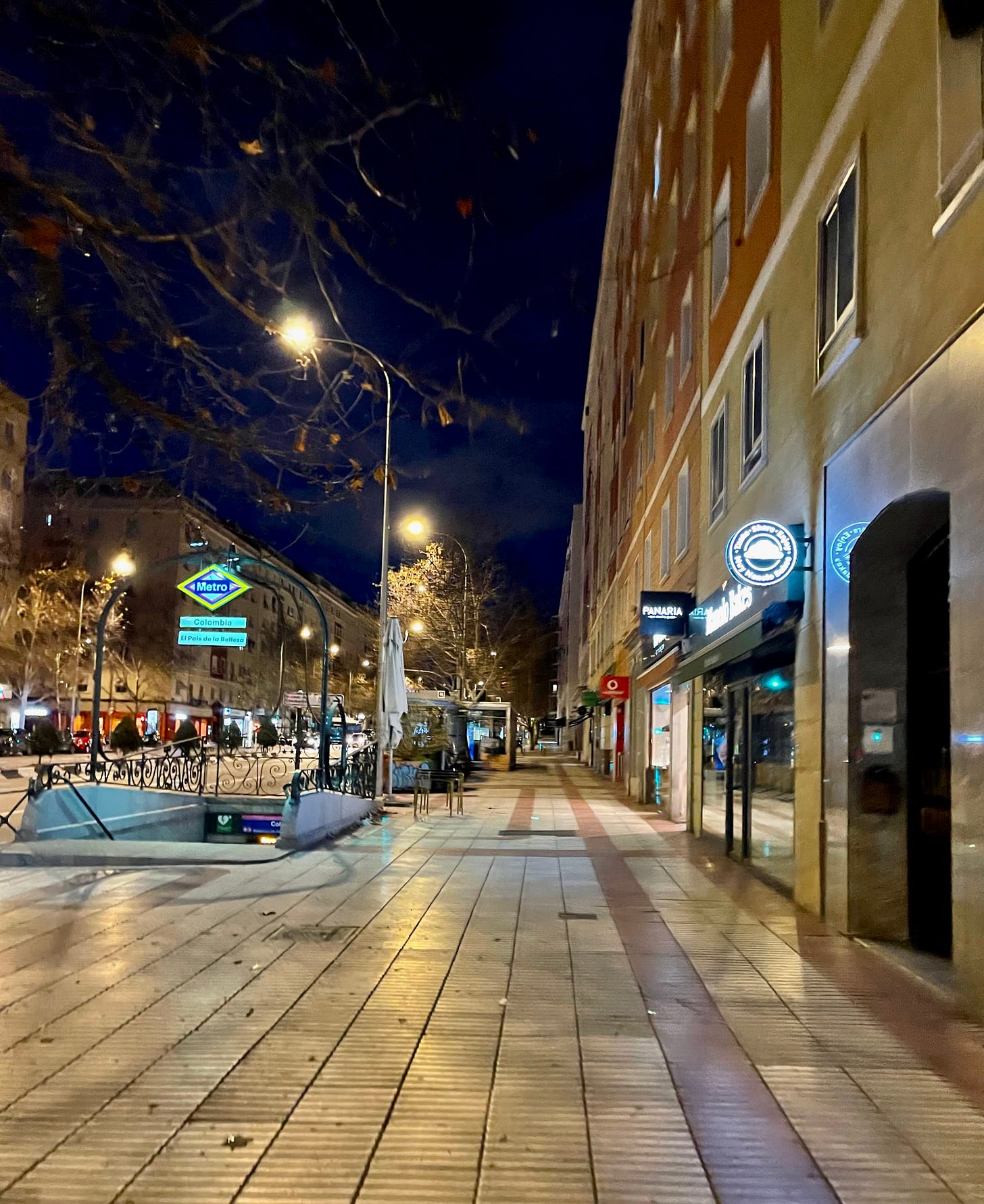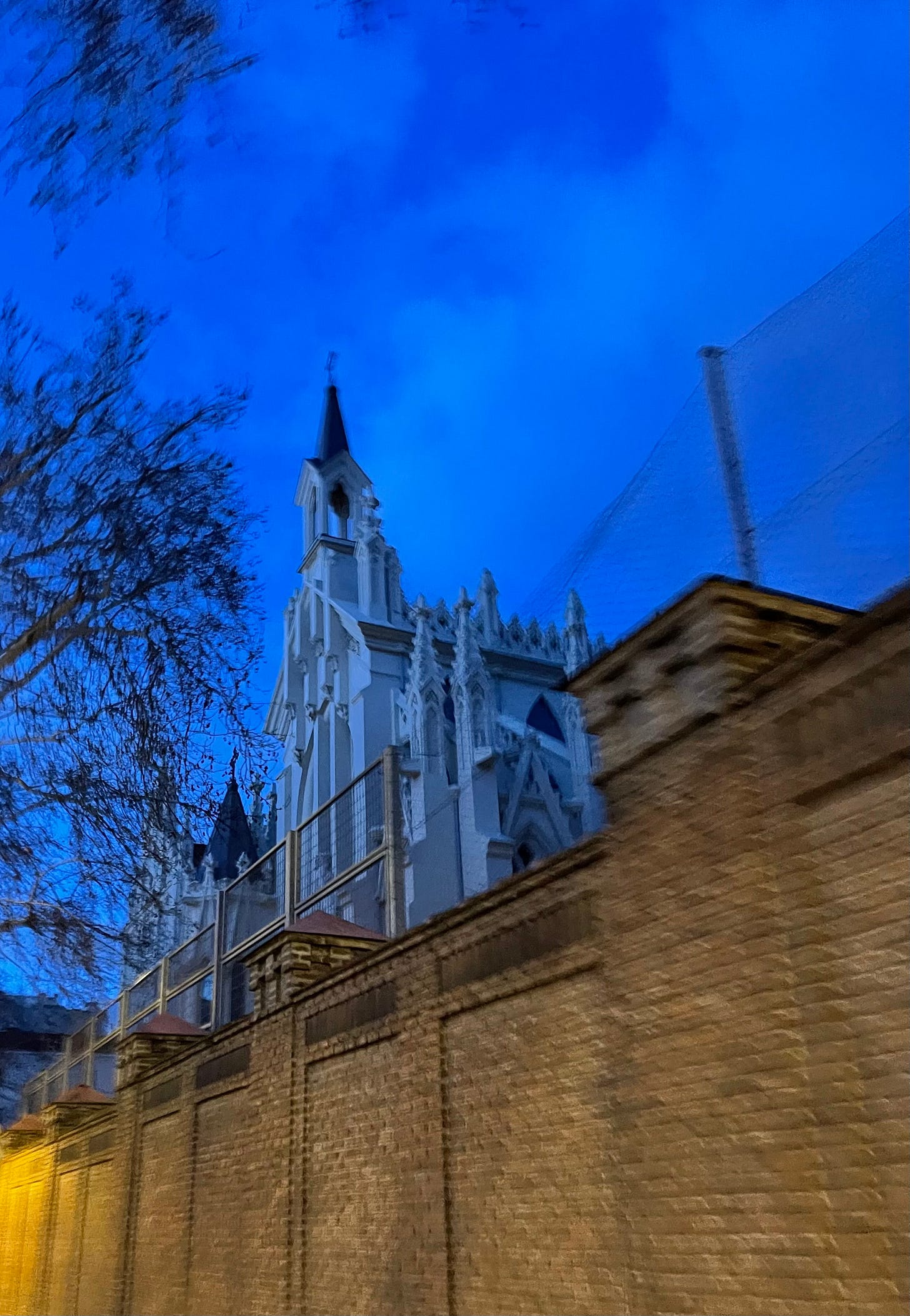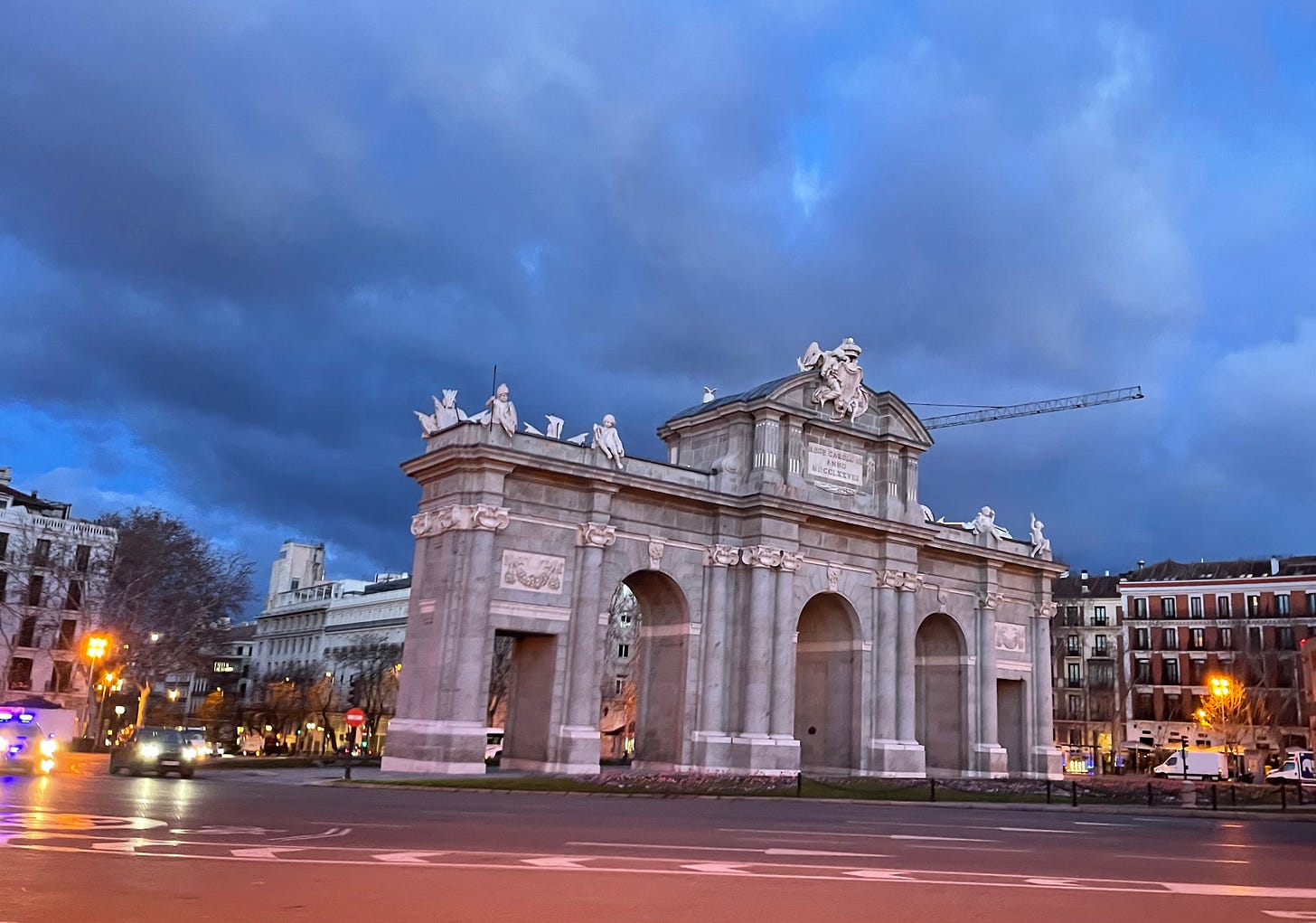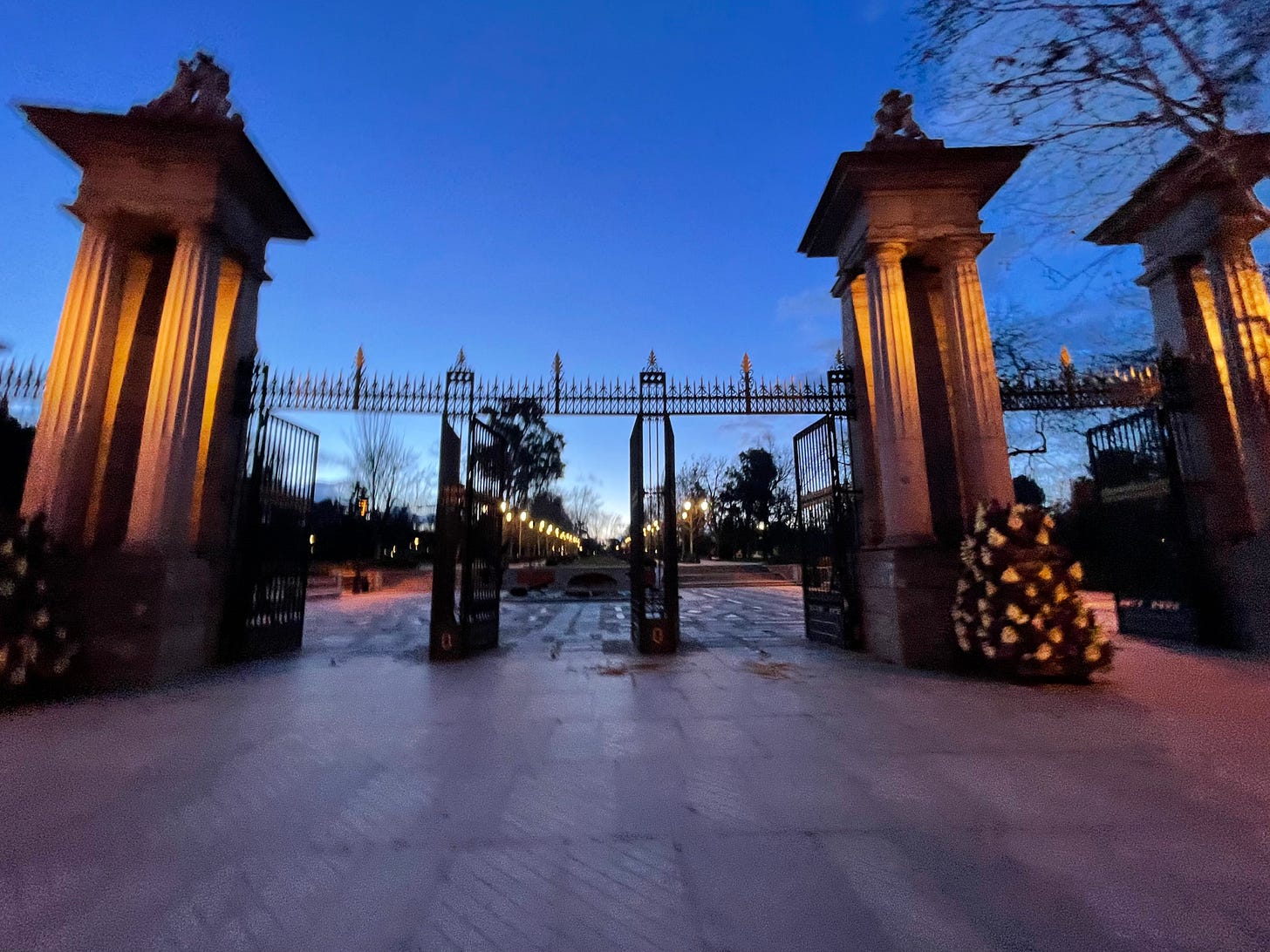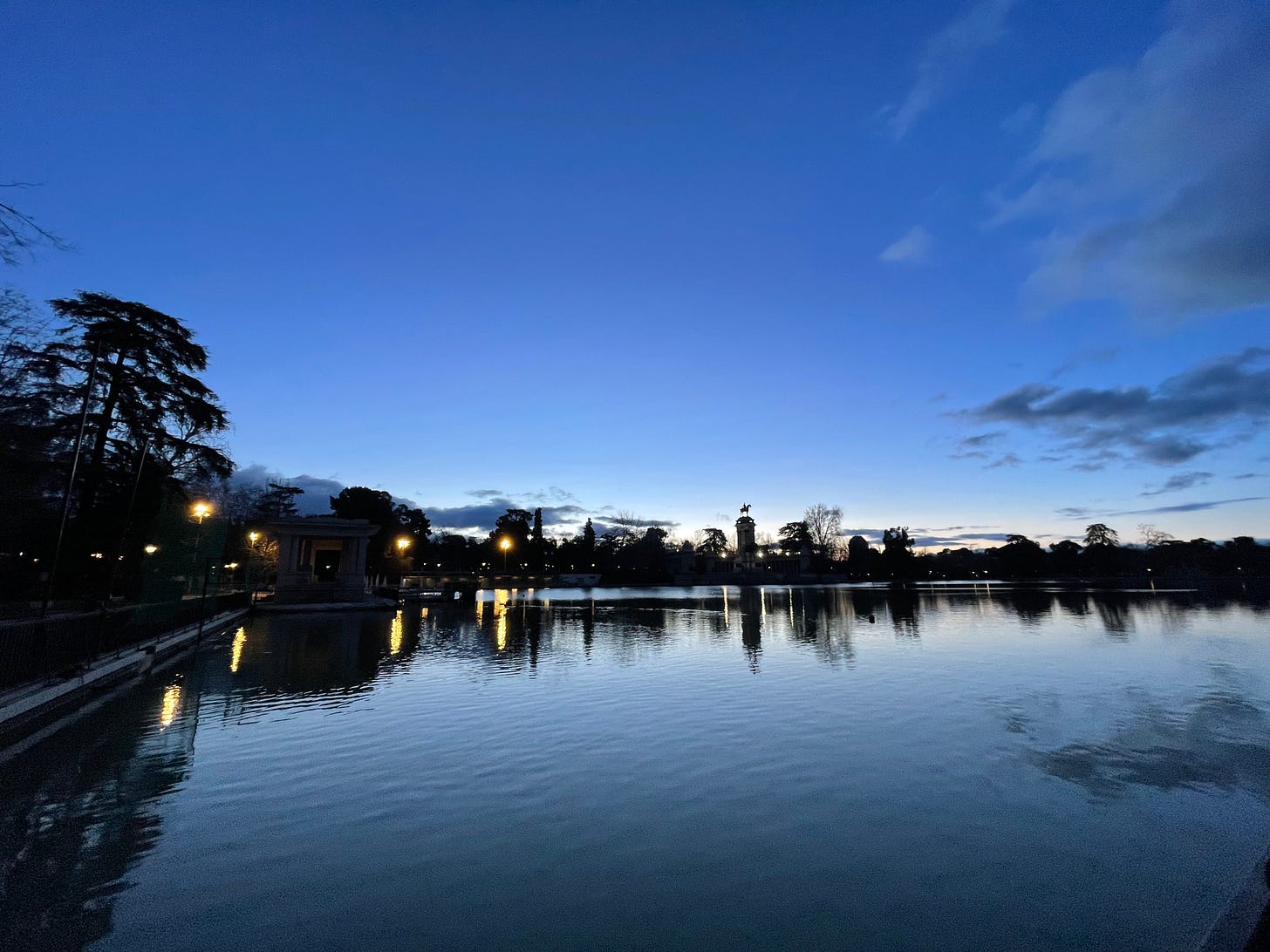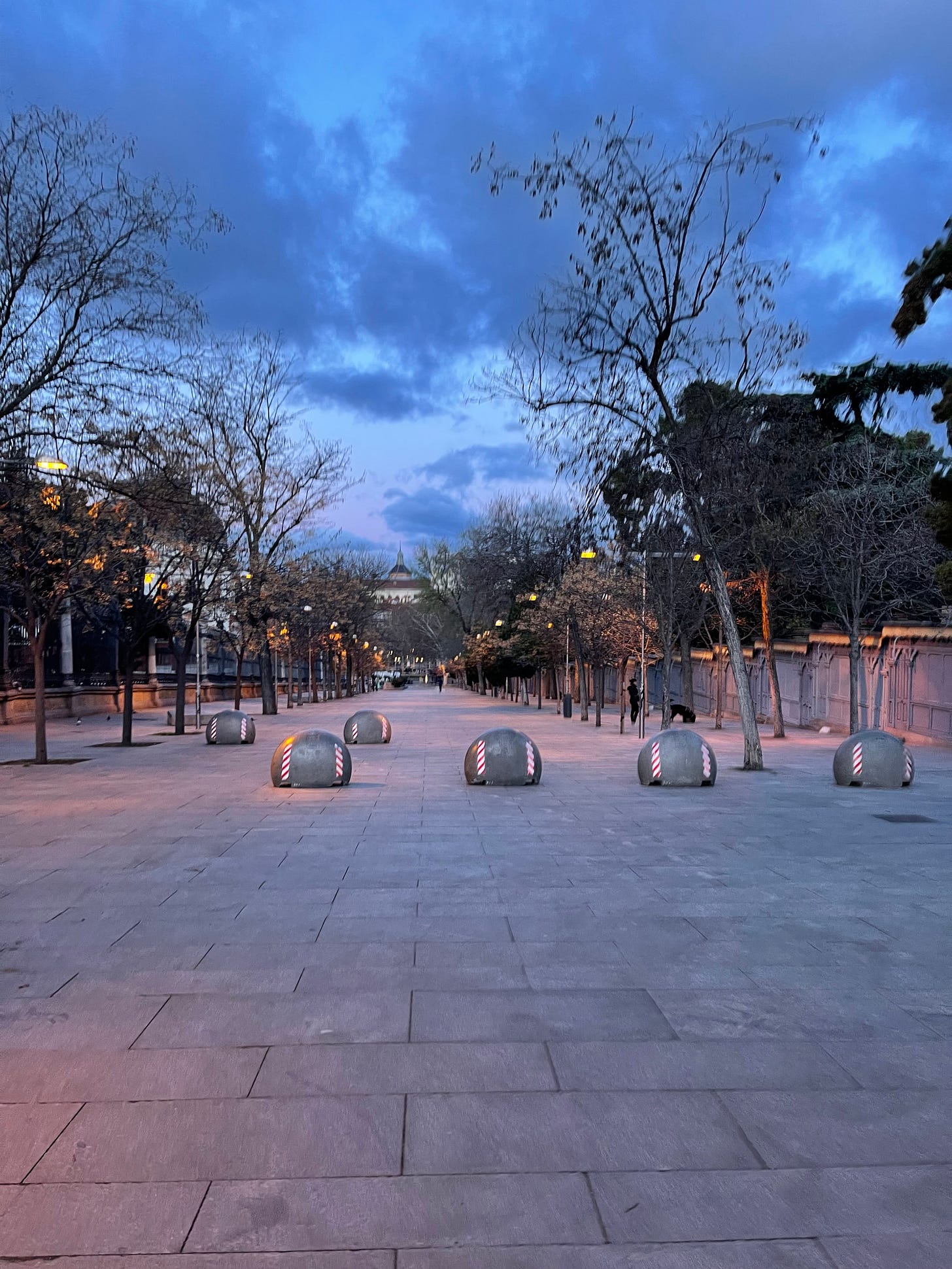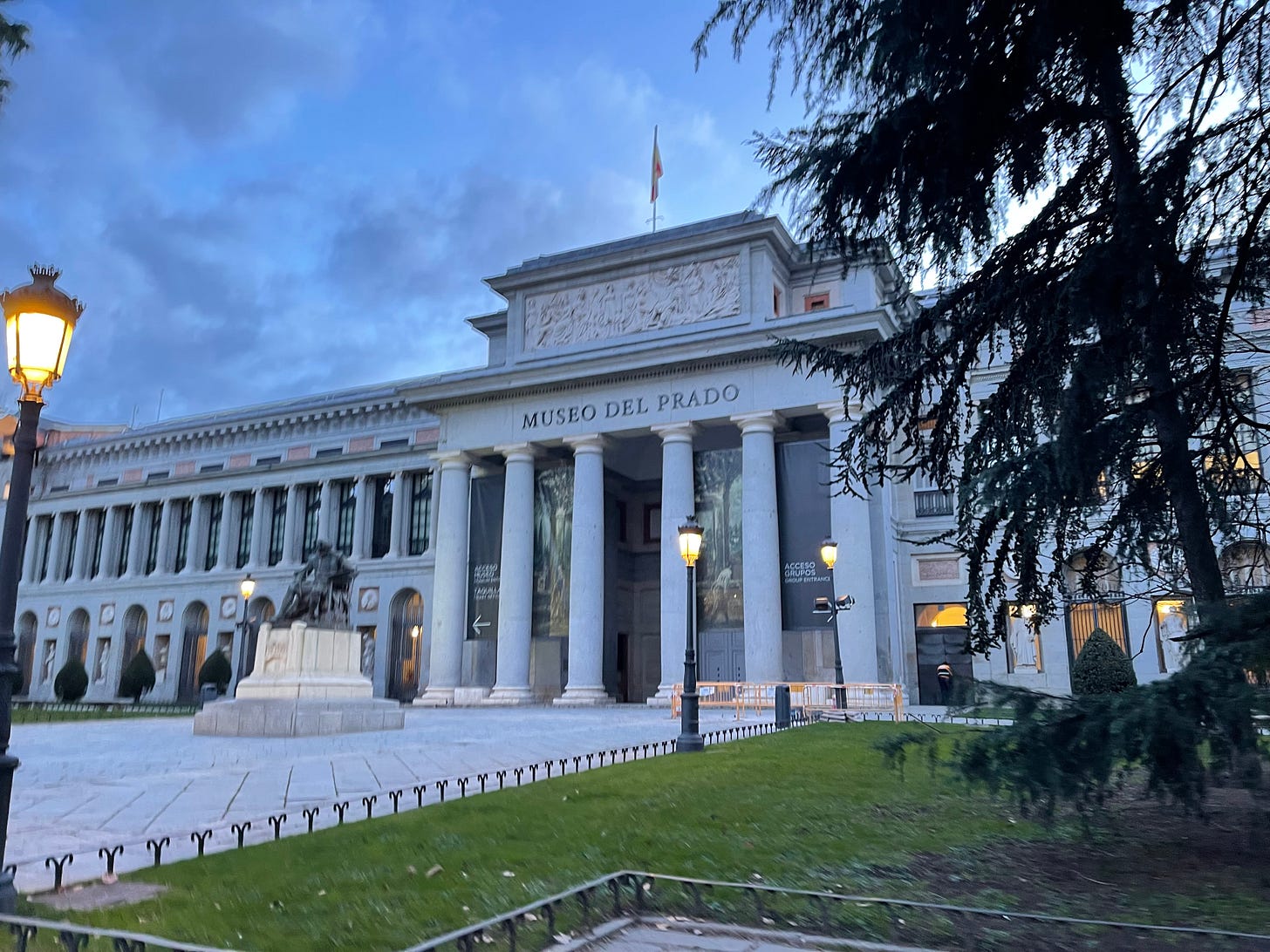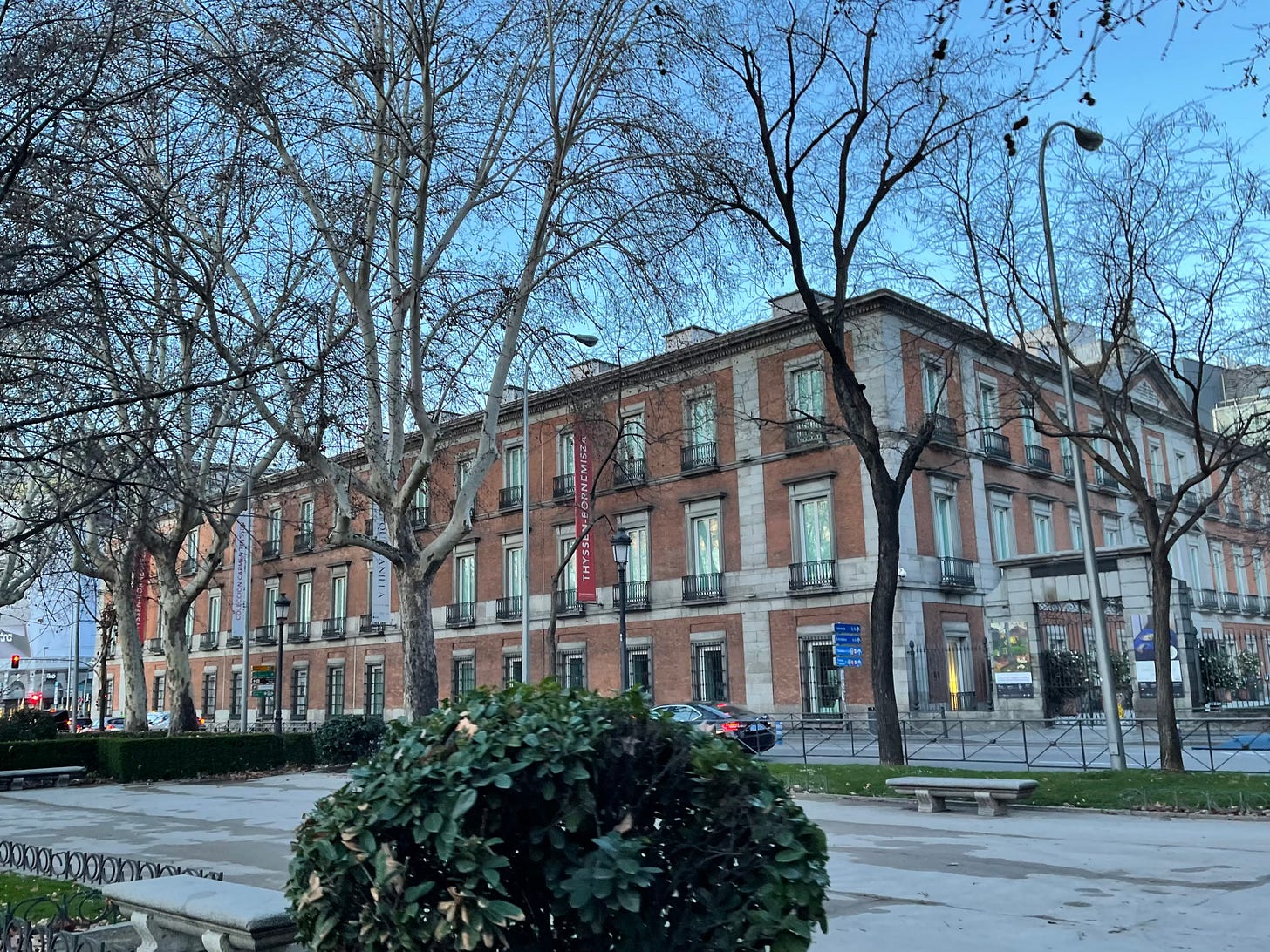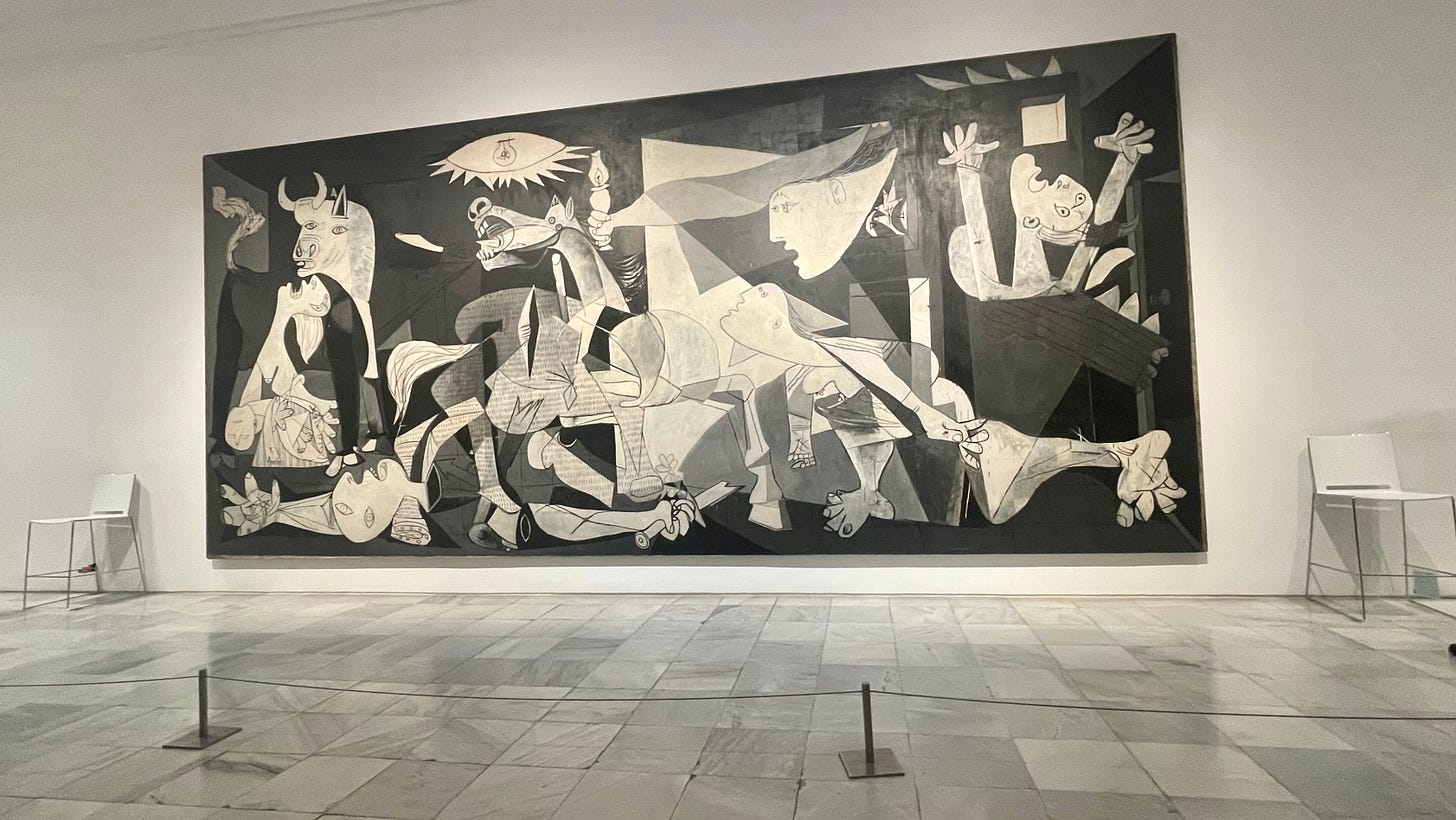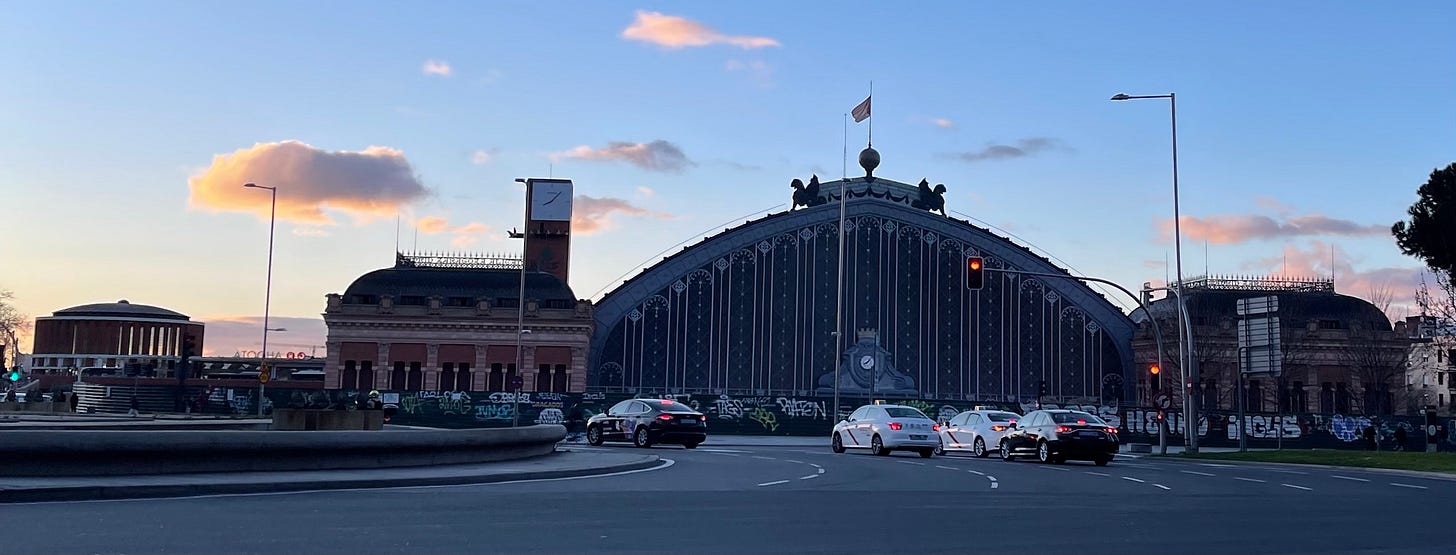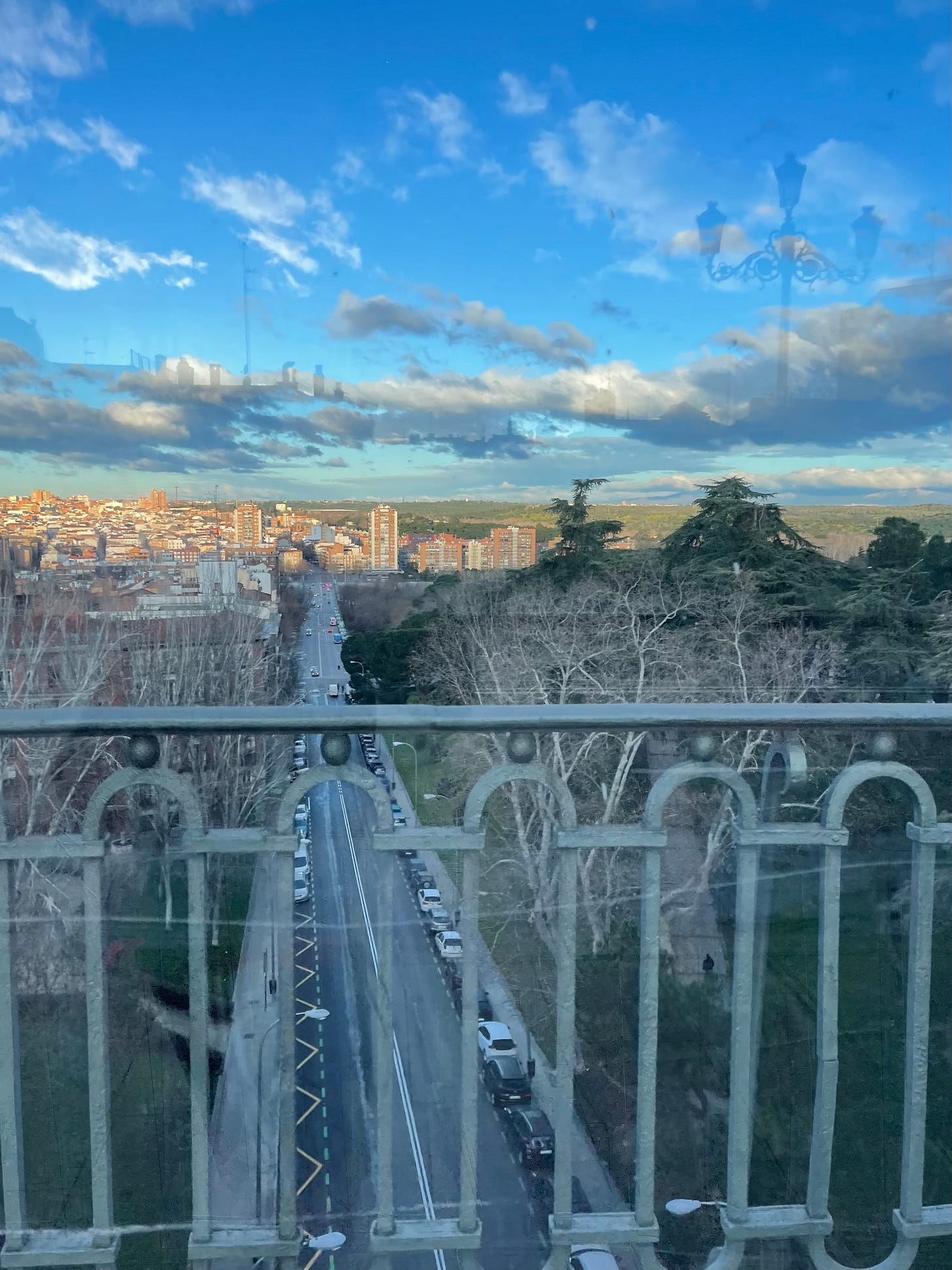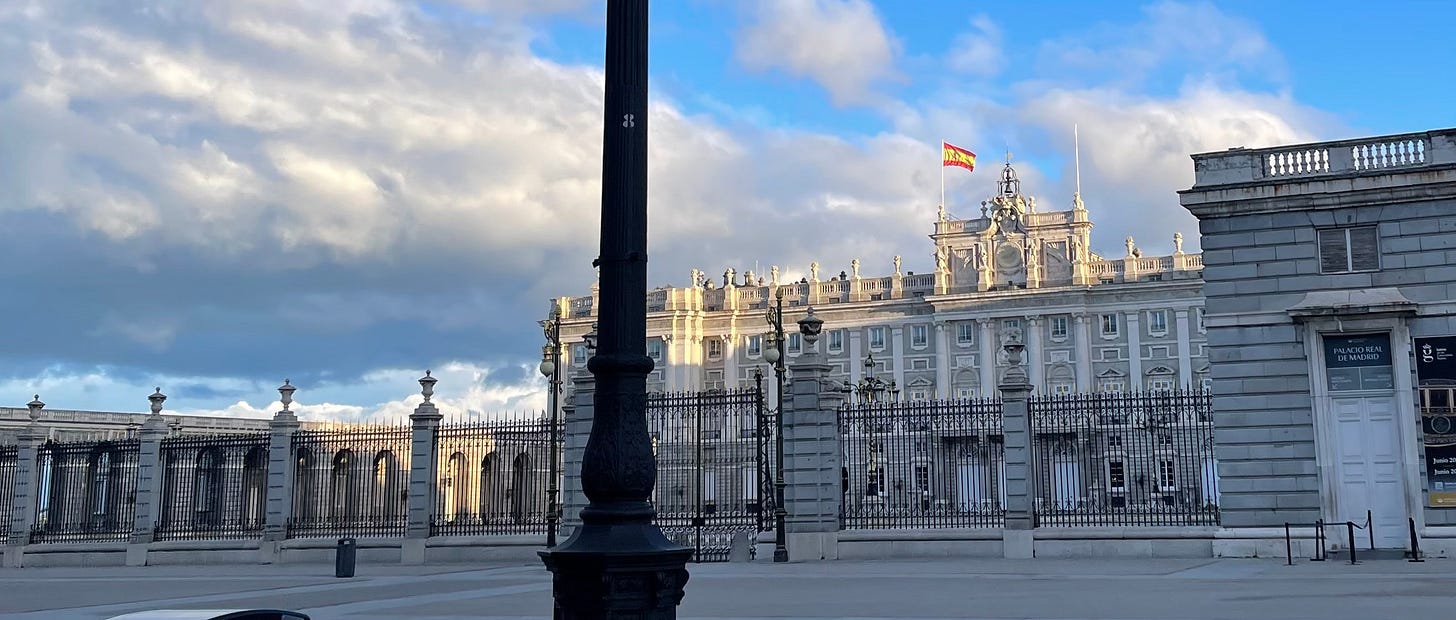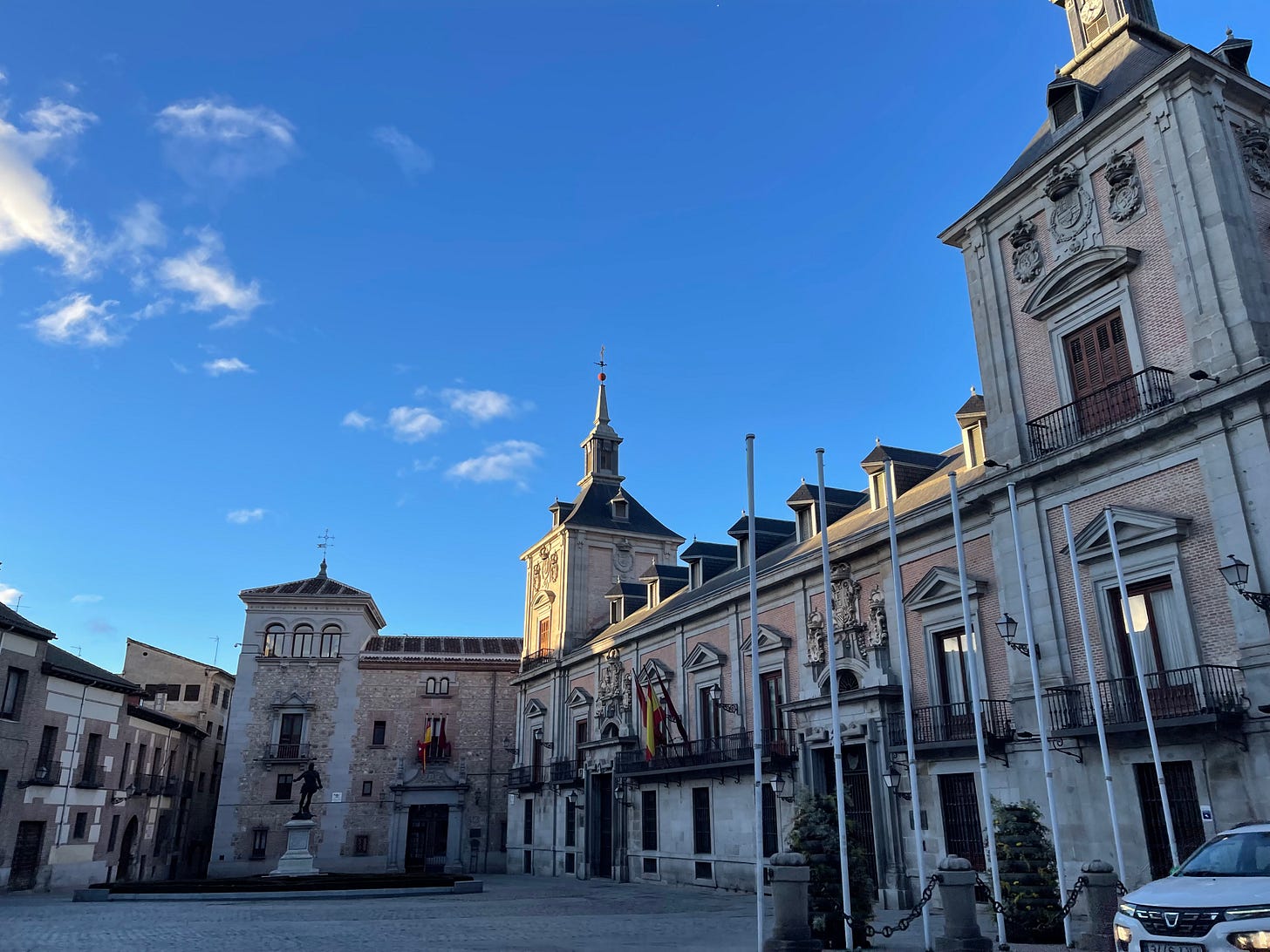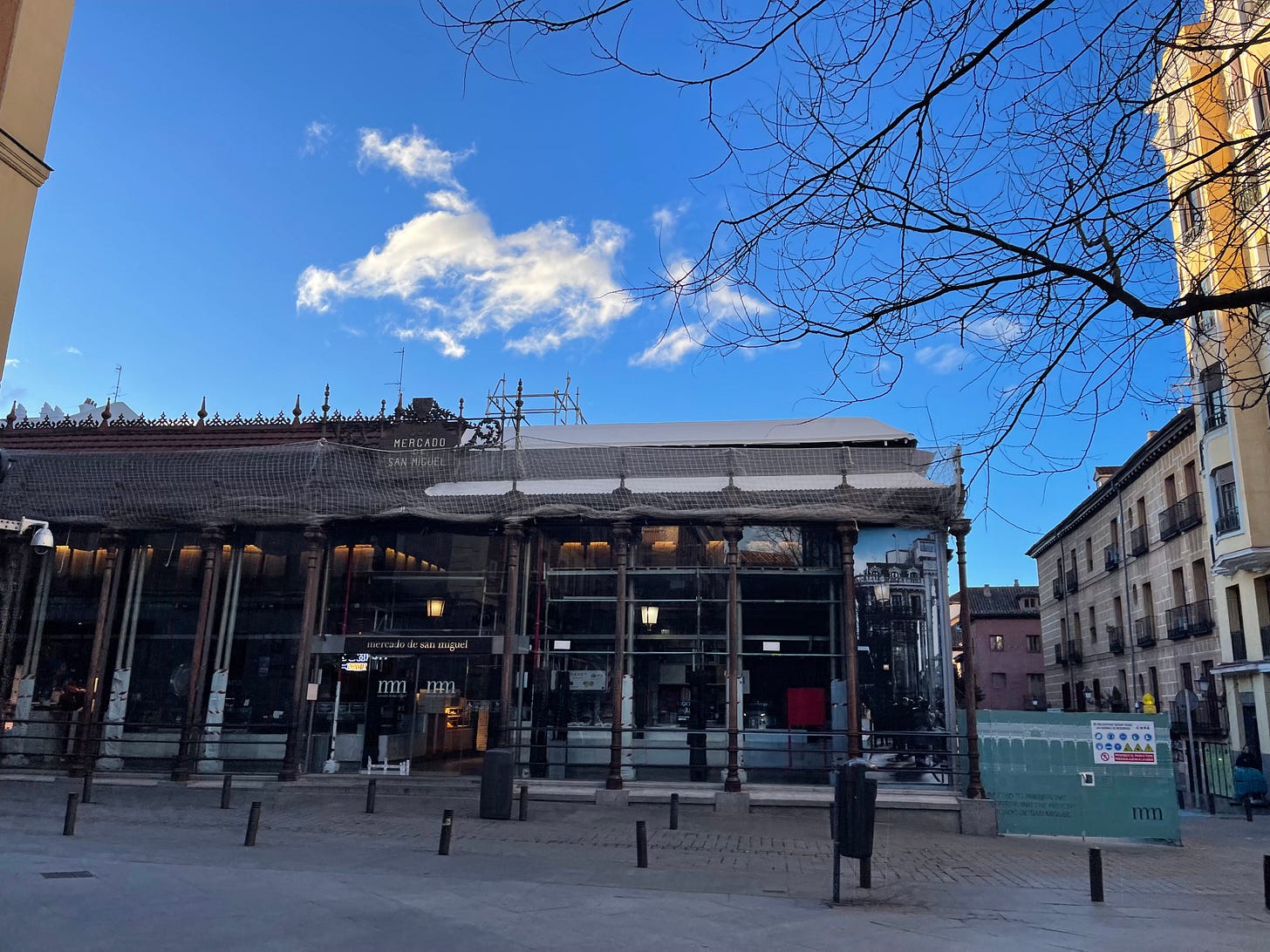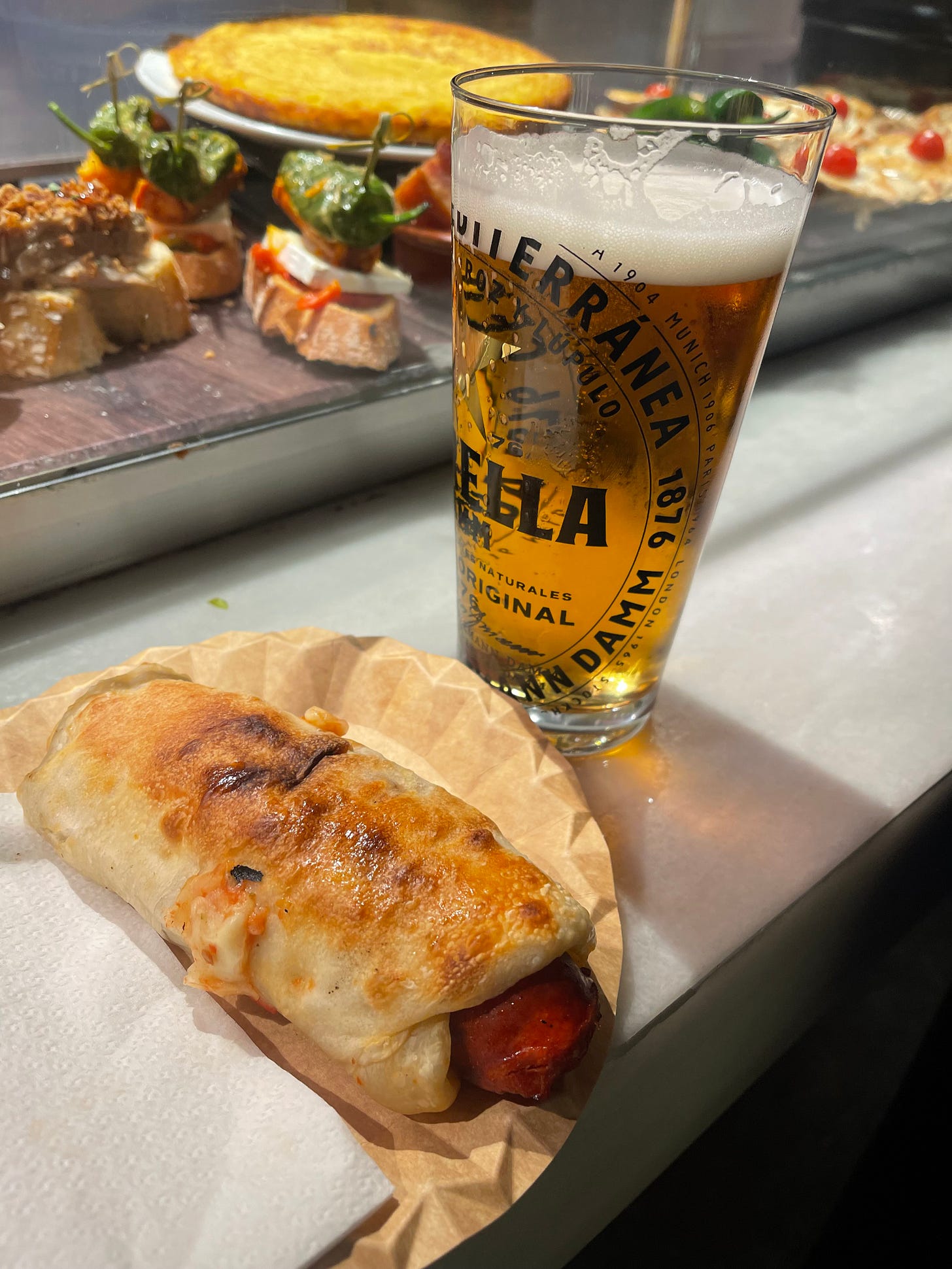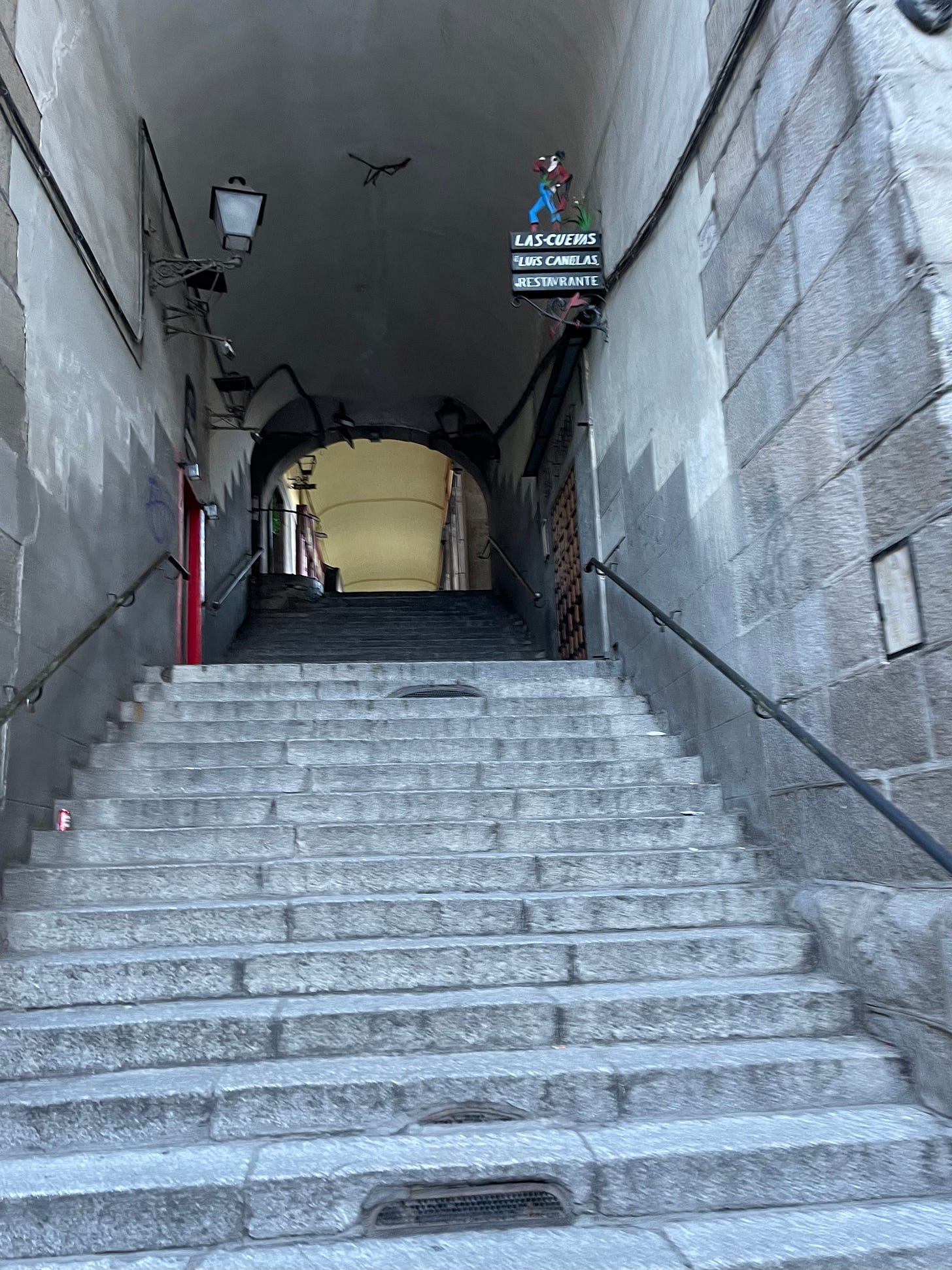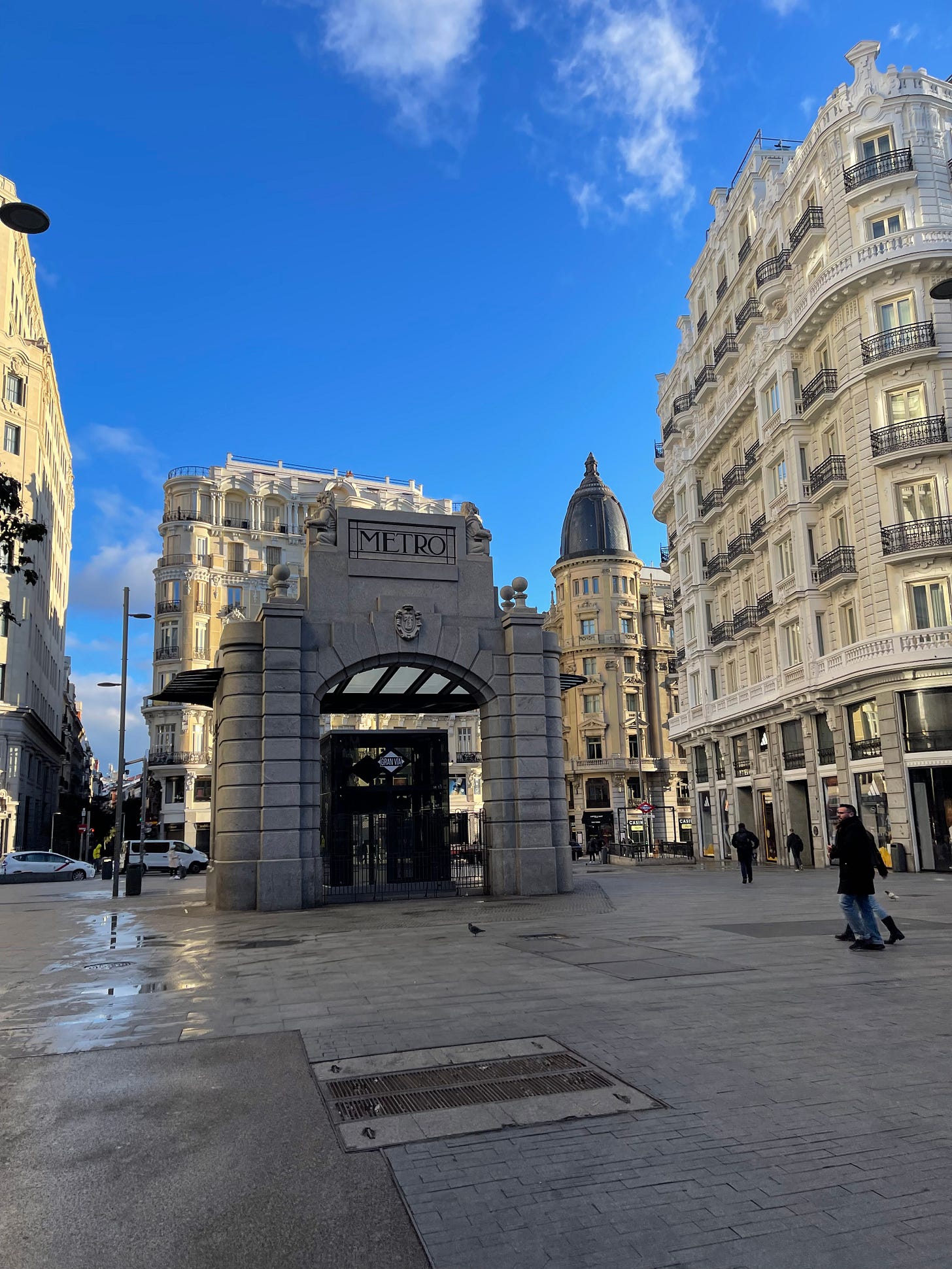February 24th, 6:35 am
Madrid, 657 m altitude (2155 feet), 2 degrees Celsius cold, with a mild wind that cuts like a knife.
The run started too early, at the notorious Gran Via, with quite a few roaming “borrachos” from last night. A surprising number of cars, of which many are taxis, cruise the streets of this magnificent avenue.
It is very cold but since the weather is dry it does not pinch too hard, except when the avenues open up as wind canyons. The sidewalks are wide and perfectly paved so I head down to Paseo de Recoletos at a happy pace
When I get to the spectacular Cibeles that’s where it hits me. The “hidden” mountains of Madrid’s avenues. The streets are so wide that when you are walking you really don’t pay that much attention to their slopes. Running is a different story.
Madrid is packed with cultural events, and just yesterday at Cibeles, I had the pleasure of learning about Monet’s water lilies. Lots of colors unlike this dark cold climb ahead of me.
I chose to go up the Recoletos and then the Castellana, and up it is, a long, long climb that does not seem to have an end (~5.5 km). The avenue is extremely wide and flooded with trees and green, but they hardly shine in the dark this early in the morning.
Spain is in the wrong time zone. It should be in the same as Portugal and the UK but instead chose to be one hour ahead. This means that the sun would only be up at around 8 am which was too late for me, so I chose to go out in the middle of the night to have time to visit Madrid later during the day.
It is a Castellana of solitude, the way I like it in my early runs. Fortunately there are not as many cars as there were in the Gran Via, so it makes it easier in the crossings. There are a lot of them and some are a little bit tricky because the sidewalks sometimes merge with the road and one can be tricked to believe that it’s all sidewalk. Keep your eyes open. There are many glorious buildings full of personality and grandeur but they are hard to see at night (and to photograph). Madrid is a striking city that reminds us of the mighty Spanish empire that still is.
One particular sculpture caught my attention as from a distance it looked funny, almost childish. As I approached and understood what it really was all about, I scolded myself. The sculpture, is a homage to migrants looking for a (better) life in Spain and Europe. A sad story that does not seem to have an end to it.
I am counting my km to make a right turn at the top of the Castellana, and hurry my pace, maybe too much. Little did I know…
The run goes by Plaza Colón where the gigantic Spanish flag proudly unfurls to the wind.
At km 5, we arrive at the new Santiago Barnabéu, Real Madrid’s iconic stadium. It is impressive, like a spaceship that a skilled architect expertly landed in the middle of the local buildings. Somehow they managed to make it look small - an amazing feat. It is not small and looks really cool. My photo does not do it justice.
As I make a right at “my top” (the avenue stretches forever) of the Castellana I am greeted by a pleasant surprise… the road keeps climbing! Oh well, at least it should be only for around an extra km and then I will head back on a road parallel to the Castellana, but down, so I hope. I could not be more surprised when I make another right to the Calle del Principe de Vergara, and am served with yet another climb. Suddenly I felt inside an Escher painting. Too little sleep and too many Picassos and Miros, I guess. Now I am pushing hard to shake these climbs of my back.
Later looking at the profile, it was mostly my imagination going cubist.
I don’t think there is such thing as a small narrow avenue in Madrid. Impressive.
The streets are empty, and quiet, except for chords of the birds performing just for me. Sweet. My bait further down the road was the Parque de El Retiro. There are some tricky crossing spots in Principe de Vergara. I jaywalked several reds in perfect safety - there were barely any cars in this area of the city.
Finally there starts to be some light for photos.
I praise a shy descent all the way down to the corner of Retiro, and then, yes, I head really down to Puerta de Alcalá, a famous spot by one of the main entrances to Retiro.
For a moment I turn my back to the Retiro so that I could “instagram” Puerta de Alcalá, and as I turn around I am shocked yet by another climb up Retiro.
Retiro has a scale that reminds me of Central Park, although ~4 times smaller. You loose the sense of the borders once inside. If the avenues in Madrid are wide, the ones in Retiro do not disappoint. There is plenty of space for all the early sparse runners that are starting to wake up. As is the sun. Finally some daylight to capture my Monet masterpiece (less the lilies) of the Retiro lake. Superb view.
The park is so big that if I lived here I would try to fit a half marathon using the park paths without crossing the same pathway twice. It might be possible (I will try to solve it one of these days)
I wanted to cross the Park North to South, but little did I know that it meant, again, climbing. Fortunately as I get to the Statue of the Fallen Angel there is a road that skates me down back to Paseo Del Prado avenue (running by the botanical garden)
I had to score the Golden Triangle of Art, so I climb Paseo del Prado to find the majestic Museo del Prado, followed by another lap around Cibeles.
From Cibeles I go down by Museo Nacional Thyssen-Bornemisza and finally Reina Sofia. Three of the finest world museums, truly a golden triangle.
Just two days before I had the pleasure of visiting Museo Nacional Centro de Arte Reina Sofia, and what can I say, Picasso
Picasso’s Guernica is a painting that, to our shame, today, is just as important as ever.
I am at km 17 and have arrived at Plaza Emperador Carlos V and on the other side of the road, the stupendous railway station of Atocha (that carries a sad memory with it). My phone camera, makes it look small.
From here on we go along Ronda de Atocha, Valencia, Toledo, evocative of so many other beautiful cities of Spain. These streets are not as interesting as the previous ones on the route, but lead the way to what it looks to be an infinite number of historical buildings (did I mention that it is all about climbing from now on?.
The goal is to reach the Royal Palace which seats on the west end of Madrid. We cross a bridge above Calle de Segovia, protected by glass panels to prevent a history of unfortunate suicide jumps. The glass helps creating an interesting (casual) ghost effect on the photo.
Next comes Catedral de Santa Maria, followed by the Palacio Real de Madrid. I had a run to finish, so there was no time to fool around playing a tourist. My hands were freezing from all the photos.
It’s time to head back to the finish line, and the older Madrid buildings want their share of the news.
The run goes by Casa de La Villa which used to be the city hall for a few centuries (yes that’s the timescale around here). I had breakfast everyday at a coffee shop with more than 100 years and tasted chocolate churros at spot from 1902. Tasty not stale.
Next on the punchcard is the dinner spot from a few nights ago, Mercado de San Miguel. A market that is now a great spot, albeit a little on the touristic side, for cañas and tapas.
There are now so many interesting routes, that it is hard to make a decision. I chose to go down the street and then make a triumphant entrance up the stairs into Plaza Mayor.
Plaza Mayor is breathtaking and soon will be packed with people enjoying the view, hopefully some sun, and one of the dozens of restaurants and coffee shops.
I am running out of kms but definitely not out of tourist attractions. This is the right time of the day to enjoy them - without tourists. A sprint by Puerta del Sol, void of cameras except for mine, and I pull another Picasso.
It’s time to head to the finish line by the old entrance to the Metro Station of Gran Via.
There was so much more to run in Madrid. My route looked short and quick. It is a city packed with history, flourishing with culture and filled with life. Spanish people are highly sociable and I was impressed by how nice everyone was in every tienda, restaurant, bar and museum. I point it to be the secret of the Spanish people’s longevity. One would think that the food does not look as healthy as nutritionists would paint it, but I guess that the health comes from the love and craftsmanship that you put into the cooking. Laughing with friends and family, washes away our worries, and with that come longer and happier lives - they know how to do it in Spain.
Madrid - what a great city!
Enjoy your runs!
APF
PS: The route and profile as recorded by Strava

